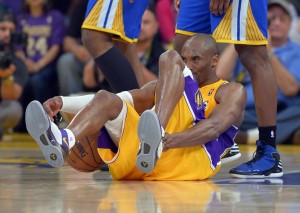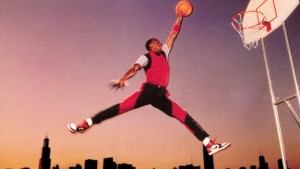 As of the 14th of January, there were 64 players on the injured list in the NBA. Of these, no less than 40 were out because they had sustained damage to a leg – including toe, foot, ankle, Achilles, hamstring, calf and knee injuries.
As of the 14th of January, there were 64 players on the injured list in the NBA. Of these, no less than 40 were out because they had sustained damage to a leg – including toe, foot, ankle, Achilles, hamstring, calf and knee injuries.
That is 62.5% of all injuries to NBA players. Of course, basketball is a muscular sport and injuries are to be expected – but 62.5% still seems like a very high percentage.
Perhaps the most publicized of injuries this year have been those of Kobe Bryant. The Lakers’ Black Mamba has only spent about two weeks on the court this season between last summer’s Achilles injury and the knee injury that he picked up against the Grizzlies in December – both leg injuries.
These types of injuries can be devastating – for example, remember that an Achilles tendon injury ended the career of Isaiah Thomas. In fact, the jury is still out on how well Kobe is going to come back – of course, everyone wishes him well, but at the age of 35 it’s not a foregone conclusion that he’s going to get back to his former level of performance.
 In fact, basketball has always been tough on players’ legs. Part of that is due to the amount of twisting that they do, but there are also a significant number of repetitive strain injuries as well. For example, shin splints are a common problem in basketball – these are caused by inflammation of the tendons and muscles in the lower leg due to the shock of repeated impacts with a hard surface. Even with modern shoes, this is still a problem. In fact, the problem with shin splints echoes the same types of problems that runners have – many runners develop shin splints when they switch from a soft surface to a hard surface.
In fact, basketball has always been tough on players’ legs. Part of that is due to the amount of twisting that they do, but there are also a significant number of repetitive strain injuries as well. For example, shin splints are a common problem in basketball – these are caused by inflammation of the tendons and muscles in the lower leg due to the shock of repeated impacts with a hard surface. Even with modern shoes, this is still a problem. In fact, the problem with shin splints echoes the same types of problems that runners have – many runners develop shin splints when they switch from a soft surface to a hard surface.
Perhaps it’s time we started to take a closer look at the design of court surfaces in the NBA.
Obviously, everyone is wedded to hardwoods such as maple, and there have been advances in hardwood court technology over recent years. However, outside the NBA, high-performance synthetic surfaces are becoming more popular, in part because of ease of installation and maintenance.
Critically, however, these types of basketball courts can offer better grip than hardwood courts, and also provide extra cushioning – which reduces repetitive strain injury. No one is suggesting that the NBA should throw out hardwood courts, but surely it is worth while taking a look at synthetic court technology to see what can be learned from it.
So was JR Smith on that list? Would he be considered a Brain Injury?
What about KG when he sat out the game vs Toronto on Saturday, despite a chance to have 4 games rest afterwards? Would he be “too old”?